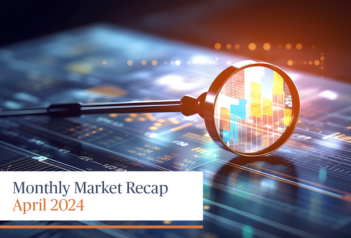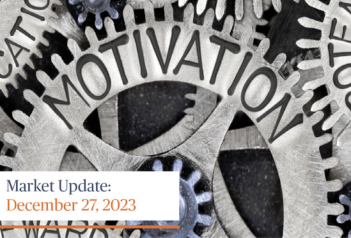On May 5, a day after celebrating the Federal Reserve’s signal that it would not be making any jumbo-sized interest rate moves, the Dow fell by a headline-grabbing 1,063 points. This translates into a drop of 3.1%. Other equity markets did not fare as well. The S&P 500 dropped by 3.6% and the technology-laden NASDAQ Composite fell 5%. Few assets escaped from the sharp about-face. The price of the current 10-year Treasury note fell by 0.9%, raising its yield to 3.04%, the highest level since 2018. Bitcoin fell 8.4%.
The day before, the Federal Reserve raised the fed funds rates by 50 basis points, as most expected. The Fed also announced that it will let its balance sheet shrink beginning in June, by up to $47.5 billion in maturing securities each month, ramping up to $95 billion starting in September. Fed Chair Jerome Powell dismissed the negative 1.4% GDP print for 1Q22 and said the Fed remains bullish about household spending and business investment. According to Powell, the risks to inflation come primarily from overseas, and the added COVID-19 lockdowns in China as a potential contributor to upside inflation risks from supply chain disruptions. Equity markets cheered the news and the Dow climbed 2.8%, the S&P 500 jumped 3% and the NASDAQ 3.2%. Quite a two-day reversal!
While investors expect the Fed to hike rates by 0.50% each time at the next two meetings, concerns linger about the duration and speed at which inflation will moderate — led by base effects. The Fed envisions an end to policy normalization soon after the policy rate exceeds 2.5%. We think a higher rate is justified and may surprise the Fed on how much more aggressively it will need to raise rates to combat inflation.
Deglobalization and demographics are still powerful longer-term deflationary forces. But in the near-term, the ongoing tight labor market, high commodity prices, and increases in mortgage and rent payments make for higher CPI numbers for the rest of the year. Onshoring of supply chains, the potential for student debt being cancelled, increases in military spending overseas, are inflationary as well.
We have positioned portfolios for the last 18 months in preparation for a change in monetary policy and interest rate environments. The next 10 years will look different than the last 10 years when money was easy. We understand some of this transition is felt by all investors and can be uneasy to look at day-by-day. Our outlook continues to call for challenging equity and fixed income markets in the near-term, but as those two days have shown, trying to chase or time the market is very difficult and dangerous to long-term wealth.
Finally, drawdowns in the market such as this one give managers the opportunity to deploy capital into quality companies and businesses. Up until recently, the S&P 500 was dominated by a relatively few number of stocks that had more expensive valuations and shrinking earnings contribution. Opportunities across many industries are now showing up on our manager’s screens for potential investment. We are also paying attention to what is happening in the credit market for potential stress. There just might be a time — and yield — in the future when fixed income becomes attractive once again.
If you have any questions or want to have a conversation about the market or your portfolio, please contact Liz, Ed, Fred, Scott, Tyler, or myself. Your Sendero team is ready to help.
Best Regards,
Amaury de Barros Conti
210-930-9409


